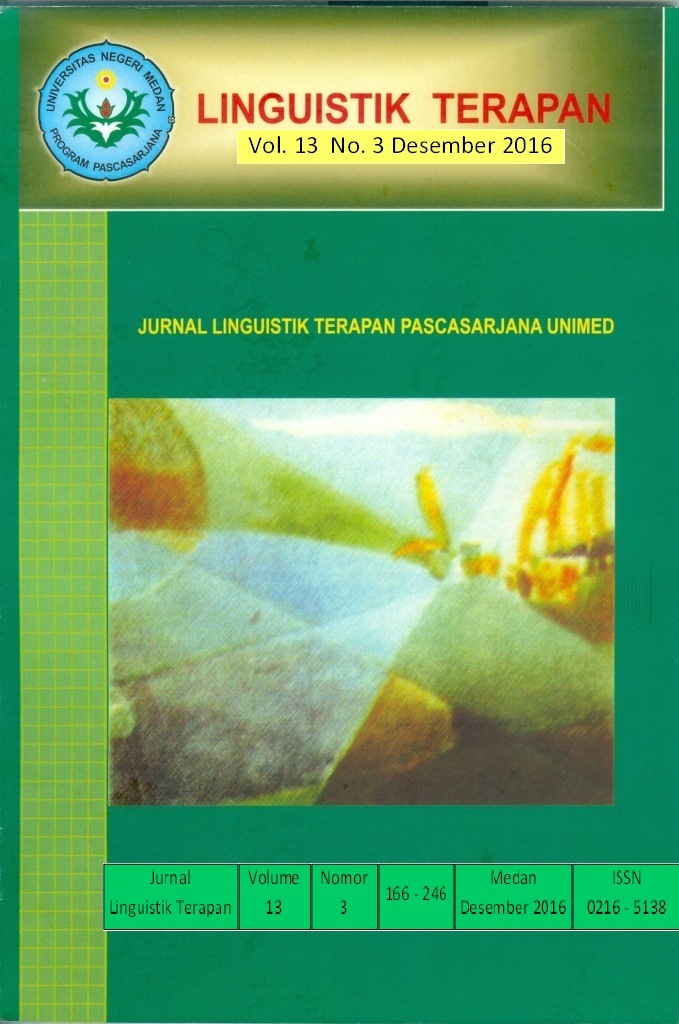Identity Construction and Code Mixing on Micro Scale Business Advertisements in Medan
DOI:
https://doi.org/10.24114/lt.v13i3.4939Abstract
The objectives were: (1) to show the elements of print advertisements contain code mixing; (2) to show the categories of code-mixing used by advertisers/entrepreneur in print advertisements; (3) to describe the realization of identity construction in print advertisements; (4) to find out the reasons why the advertisers/entrepreneur of micro scale business use bilingual languages in marketing a product. The data were obtained from culinary products, œBurger Sumo, œJajanan Medan 369,œChicken Holic, and œMartabak Buddy through observation and indepth interview. The findings showed that: 1) In term of elements there were product name, subheading, slogan, headline, body copy and illustration. Some slogans used puns for more memorable and attractive for consumers; 2) Seven categories of code mixing were: isolated lexical, phrasal lexical substitution, phrasal substitution, sentential substitutions, others (trilingual), and slang; 3) Identity constructions were realized in form of code mixing Indonesian language to other language, especially English; 4) The reasons were attention getting, persuasion, innovation and creativity, prestige, technological words to fun and memorability because the owners thought that tag line/branding in Indonesian language cannot translate directly or if the discourse translate in English the message cannot deliver well to consumers because English has own term in the market/business. Keywords: advertising, language; code mixing; identity construction; print advertisementsDownloads
Published
2016-12-30
How to Cite
Heriani, D., & Zein, T. T. (2016). Identity Construction and Code Mixing on Micro Scale Business Advertisements in Medan. LINGUISTIK TERAPAN, 13(3). https://doi.org/10.24114/lt.v13i3.4939
Issue
Section
Articles






